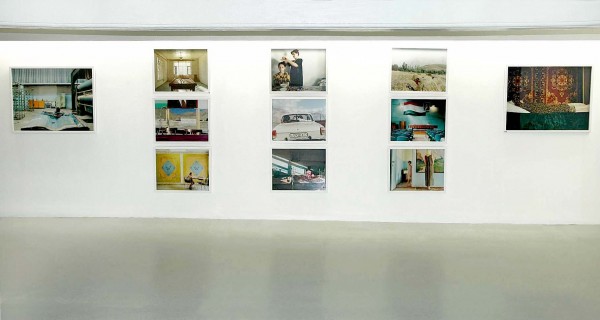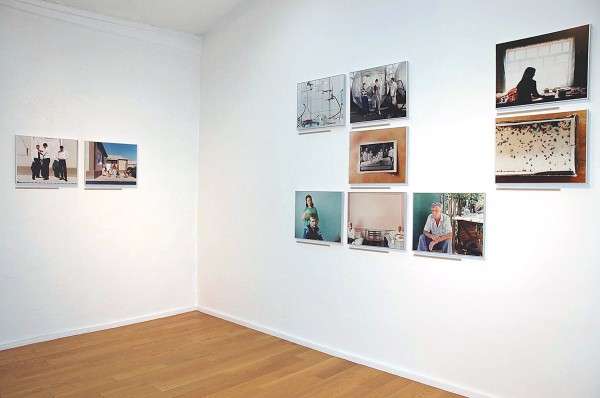
Tajikistan weaving by Miriam Rosen, ArtForum
For once, something has been gained in the translation--and there is a lot of translation going on in this remarkable series of images. To begin with, the title: What began in the mind of Sheffield-born, Paris-based photographer Rip Hopkins as "Tajikistan Weaving" became "Tadjikistan Tissages" for the purposes of this exhibition. The scatlike alliteration of the French version is already more compelling to the ear, but it is the subtle transformation of "weaving" into "weavings" (tissages) that serves to alert mind and eye to a multiplicity of possible readings. These emerge from Hopkins's translation of a journey of nearly two months into a photographic record of people and places in a country that was woven together in the '20s from bits and pieces of surrounding ethno-political entities and which is still in the process of being rewoven in the wake of the 1992-97 civil war.
Hopkins, too, has arrived at a kind of interweaving--of reportage, portraiture, painting, road movie, and autobiography. Consciously or unconsciously, his work has more in common with the carpets that sparked his interest in Tajikistan than with any documentary account. Among the technical "translations" this process has entailed is the shift from the panoramic camera Hopkins used in his earlier work as a photojournalist ("I got tired and cynical," he has said) to a medium-format Pentax complete with tripod (because "I wanted to be in control of the image") and from black-and-white to color ("People are generally disappointed when they find themselves reproduced in black and white"). The result is a much more studied sense of composition than before and a sensually understated treatment of color. Moving from one city, town, or village to another with contacts provided by people he met along the way, and notably the indispensable translators, Hopkins did not simply photograph the schoolteachers, travel agents, hotel owners, farm girls, orphans, carpet weavers, and others he encountered, but involved them in their own mise-enscene, so that, as he points out, they were the ones "who ultimately chose the image they wanted to convey of themselves."
Portraits? Not really: The subjects often look away from the camera, stand off to one side, turn their backs, or, in one case, absent themselves entirely from a domestic interior the better to display, instead, a refrigerator, a wall clock in the form of a giant wristwatch, and a television covered with a prayer carpet. In one particularly haunting image, almost a hybrid of photo and film, a Russian woman seen from behind is studying a painting on the wall of a popular history museum while her son blurs his way through the doorway beside her.

